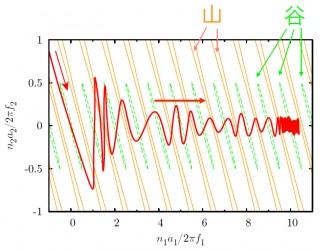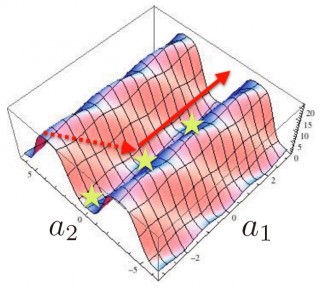Topics
2015.7.28
Axions in Cosmology: Formation of Topological Defects through Resonant Phenomenon
Particle Theory and Cosmology Group
The Standard Model of particle physics has been successful in describing almost all the properties and interactions of the particles. Yet it contains many parameters, and it is unknown why they take the values they do. In particular, there are some parameters whose values are widely different from naively expected ones. For instance, the neutron electric dipole experiments showed that the strong CP phase is less than one ten-billionth of a radian, while its “natural” value is of order unity. Why it is so small is the strong CP problem. One of the solutions is the Peccei-Quinn mechanism which renders the phase a dynamical variable, an axion. The axion acquires a potential through nonperturbative effects of QCD and dynamically cancels the strong CP phase. In string theory there appear many axions in association with the compactifications of extra dimensions, and in general, they have kinetic and mass mixings. Recently we have studied the level crossing phenomena between the axions and found that one of the axion often starts to run along the valley of the potential, passing through many crests and troughs during the level crossing; the axion roulette [1]. The axion roulette has rich implications for cosmology; it is likely accompanied by domain wall formation, and it leads to the generation of gravitational waves and the baryon asymmetry at the annihilation of domain walls. The research on its effects on density perturbations and its non-Gaussianity is on-going.
(1)R. Daido, N. Kitajima, F. Takahashi, arXiv:1505.07670 [hep-ph].
 |
 |
|
| The typical evolution of the axion during the level crossing phenomenon. The axion passes through many crests and troughs until it gets stabilized: the axion roulette. | The scalar potential for the axion. The stars represent the potential minima. |

